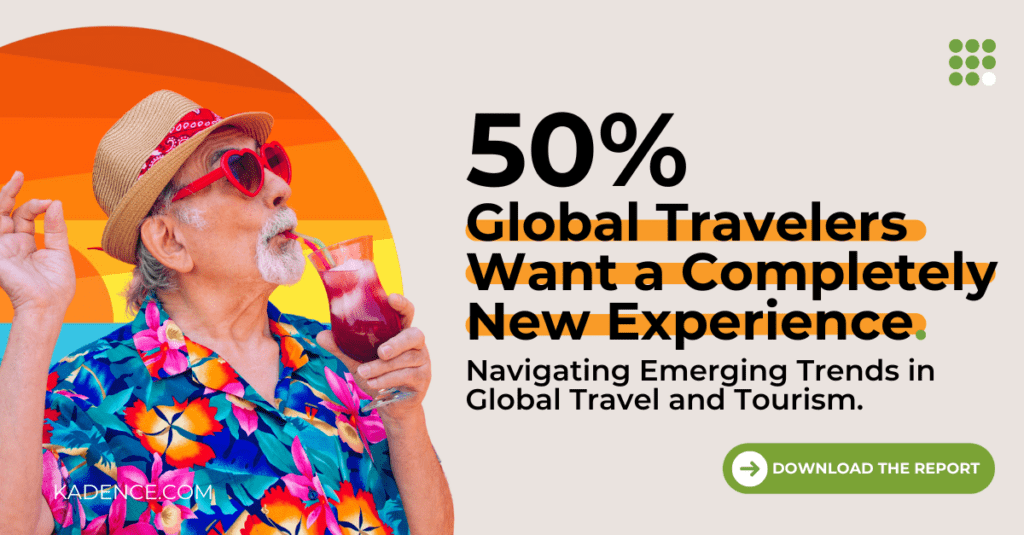Connecting with your audience isn’t a game of guesswork; rather, it’s a science that requires precision and innovation. The quality of market research is heavily dependent on the sampling techniques employed, techniques that form the underpinning of insightful, actionable, and reliable data.
Yet, as vital as it may be, the field of sampling is often shrouded in complexity and misunderstanding. What methods should one choose? How can bias be eliminated or minimised? How can we ensure that the selected sample truly resonates with the vast diversity of the marketplace? These are more than mere questions; they are challenges that must be met with expertise and finesse.
In this article, we’ll explore the intersection of sampling and market research and delve into the intricacies of connecting with your audience in an age where data drives decisions. Whether you are a seasoned marketing executive or an aspiring market researcher, the following exploration promises to shed light on the strategic significance of sampling, unravelling its complexities, and paving the way for more informed and successful marketing endeavours.
Why is Sampling Vital in Market Research?
How do businesses find the heartbeat of their target audience in a marketplace replete with choices and saturated with messages? The answer, although methodical, holds profound significance: Sampling.
Sampling is not just a technique but an art. It’s the delicate brushstroke that paints a vivid picture of market trends, consumer behaviour, and potential opportunities. But why is it so central to the realm of market research?
By selecting a subset of the population that accurately represents the whole, companies can glean insights that are both cost-effective and highly reflective of the market at large. Without proper sampling, research can easily skew towards biases and inaccuracies, leading to misguided strategies and lost opportunities.
In today’s hyper-connected world, where customers expect personalisation and relevance, sampling helps tailor messages and offerings that resonate. By understanding who your audience is, what they desire, and how they think, sampling allows businesses to create engagement strategies that connect, resonate, and foster loyalty.
For executives and market researchers alike, sampling is the key that unlocks the doors to strategic decision-making. It provides the tools to understand customer needs, preferences, and behaviours, translating raw data into actionable intelligence. Whether assessing a new market, launching a product, or redefining a brand, sampling equips businesses with the insights necessary to make informed and confident decisions.
And, if data is indeed king, sampling is the guardian of truth and relevance. It’s more than a method; it’s a tool of empowerment, an essential component in the sophisticated machinery of modern market research. It brings the audience into sharp focus, providing the clarity and precision needed to navigate the complex terrains of the global marketplace.
What Are the Different Sampling Techniques?
In market research, one size does not fit all. The choice of sampling technique is a nuanced decision that must align with the specific goals and contexts of the study. Let’s explore the rich tapestry of sampling methods that allow brands to hone in on their target audience.
Random Sampling
Random sampling, the most fundamental of all techniques, offers each member of a population an equal chance of selection. But when is it most advantageous? In scenarios where unbiased representation is paramount, random sampling is the gold standard, promising results that can be generalised to the broader population.
Stratified Sampling
Stratified sampling takes the approach of dividing the population into distinct strata or groups based on specific characteristics. By selecting samples from each stratum, this method ensures that various segments of the population are represented. The question then arises, when does stratified sampling shine? In research where understanding specific subgroups is crucial, this method adds layers of precision and depth.
Cluster Sampling
In the quest for efficiency, cluster sampling emerges as a strategic choice. By dividing the population into clusters and randomly selecting clusters for study, this method reduces costs without sacrificing accuracy. But where does cluster sampling find its niche? In large-scale studies where geographical dispersion might pose challenges, cluster sampling offers a streamlined approach.
Systematic Sampling
Systematic sampling, where elements are selected at regular intervals, combines elements of simplicity and uniformity. But why opt for this method? In cases where randomness needs to be paired with a methodical approach, systematic sampling balances ease of implementation with statistical rigour.
Convenience Sampling
Lastly, while often criticised for potential bias, convenience sampling serves specific needs in exploratory research. By selecting readily available subjects, it enables quick insights without the constraints of randomisation. Though not suitable for all research, it answers the call when preliminary insights are the prime objective.
Which Sampling Method is Right for Your Research?
Choosing a sampling method is not merely a technical decision but a strategic one. It must resonate with the research’s purpose, scope, and context. How, then, amidst a plethora of methods, can one find the right fit? Let’s embark on a guided journey to uncover the keys to this crucial decision.
The foundational step in selecting a sampling method starts with understanding the research goals. Are you aiming for a broad understanding or a deep dive into specific segments? Your objectives set the stage, guiding the choice between techniques like random sampling for general insights or stratified sampling for targeted exploration.
Knowing your audience is more than a marketing mantra; it’s a strategic imperative in sampling. Different segments of the population may require varied approaches. How can you align your sampling method with the unique characteristics and expectations of your target audience? The answers lie in meticulously analyzing demographics, psychographics, and behavioural traits.
How is Technology Transforming Sampling in Market Research?
The digital revolution is not just reshaping how we conduct sampling but redefining the fabric of connection and insight. What does this transformation entail?
Digital platforms are expanding the horizons of market research, breaking down geographical and demographic barriers. By connecting to diverse audiences in real-time, digital platforms are turning the world into a cohesive research playground rich with insights and opportunities.
Artificial Intelligence (AI) is no longer a futuristic concept; it’s a present-day ally in market research. From intelligent algorithms that tailor questions to respondents’ profiles to predictive analytics that forecast trends, AI is infusing sampling with precision, speed, and depth.
Big data also stands as a towering beacon of potential. By aggregating and analyzing complex data sets, researchers can uncover hidden patterns, subtle correlations, and emerging trends, turning raw information into actionable wisdom.
But, with great power comes great responsibility. The digital transformation of sampling brings forth ethical dilemmas and considerations. How can businesses ensure privacy, consent, and transparency when data is the new currency?
Navigating these ethical waters requires a moral compass guided by principles, regulations and a profound respect for individual rights.
In the ever-evolving world of digital technology, staying ahead is not just a competitive edge; it’s a survival imperative. Continuous learning, collaboration with tech experts, and a culture of experimentation might be the keys to unlocking the future of sampling.
Technology’s impact on sampling in market research is not a mere evolution; it’s a revolution that opens up a new horizon of possibilities. From global reach to intelligent analysis, from ethical navigation to futuristic foresight, the marriage of technology and sampling is redefining the rules of engagement.
How Can Sampling Reduce Bias and Improve Accuracy?
In market research, where nuance meets numbers, sampling is a beacon of integrity. Through mindful selection, meticulous planning, and a discerning understanding of potential biases, sampling becomes more than a statistical procedure; it evolves into a strategic asset, guiding researchers toward insights untainted by misconceptions or distortions. So, how can we wield the power of sampling to mitigate biases and ensure research integrity?
Biases such as selection bias, non-response bias, or confirmation bias can stealthily creep in, distorting findings and clouding judgment. Recognising and understanding these biases is the first step towards safeguarding the authenticity of research.
Random sampling, where every individual in a population has an equal chance of being selected, acts as a bulwark against selection bias. By eliminating favouritism and arbitrary selection, random sampling is a linchpin for unbiased, generalisable findings. But can it stand alone, or do other methods offer complementary strengths?
By segmenting the population into meaningful groups, stratified sampling ensures that diversity is acknowledged and embraced. By representing various strata, this method transcends surface-level insights, combating biases related to underrepresentation.
Non-response bias, where respondents differ significantly from non-respondents, can subtly skew results. By analyzing patterns of non-response and adjusting the sampling strategy accordingly, researchers can minimise this bias.
Final Thoughts: Navigating the Future of Sampling in Market Research
Sampling in market research is anything but static; it’s a pulsating panorama of innovation, challenges, opportunities, and profound insights. As we stand at the threshold of a new era in research, the future invites observation, active participation, reflection, and leadership.
In its myriad forms, sampling is more than a technical procedure; it’s a philosophical commitment to truth, representation, and ethical practice. The methodologies we’ve explored — from random and stratified sampling to integrating cutting-edge technologies like AI — are tools, not ends in themselves.
They serve the higher purpose of connecting businesses to consumers, insights to strategies, and data to humanity.
The convergence of technology with traditional methods is not a fleeting trend; it’s the dawn of a transformative age. Integrating big data and digital platforms is a call to embrace a future where research is no longer confined to spreadsheets and reports but lives in immersive experiences and personalised connections.
In this changing paradigm, the mistakes to avoid are not merely errors in calculation but lapses in vision, agility, and ethical alignment. The pitfalls are not in numbers but in the failure to see the broader canvas, to recognise the convergence of disciplines, the fusion of art and science, and the interplay of ethics and innovation.
I see the future as a vibrant frontier, teeming with possibilities yet grounded in principles. The success of sampling strategies will be measured not merely in KPIs but in resonance with values, alignment with societal goals, and contributions to a more transparent, ethical, and connected world.
It’s an exciting time to be in market research. The questions we ask, the methods we choose, the technologies we embrace, and the ethics we uphold shape not just the future of the industry but the fabric of society. The path forward is not a solitary journey but a collaborative adventure filled with learning, growth, creativity, and profound human connection.
Get regular insights
Keep up to date with the latest insights from our research as well as all our company news in our free monthly newsletter.





 Senior Marketing Executive
Senior Marketing Executive Sales & Marketing
Sales & Marketing General Manager PR -Internal Communications & Government Affairs
General Manager PR -Internal Communications & Government Affairs Vital Strategies
Vital Strategies
 Customer Intelligence Director
Customer Intelligence Director